Welcome to Saint Catherine’s Church
The main entrance to the Church
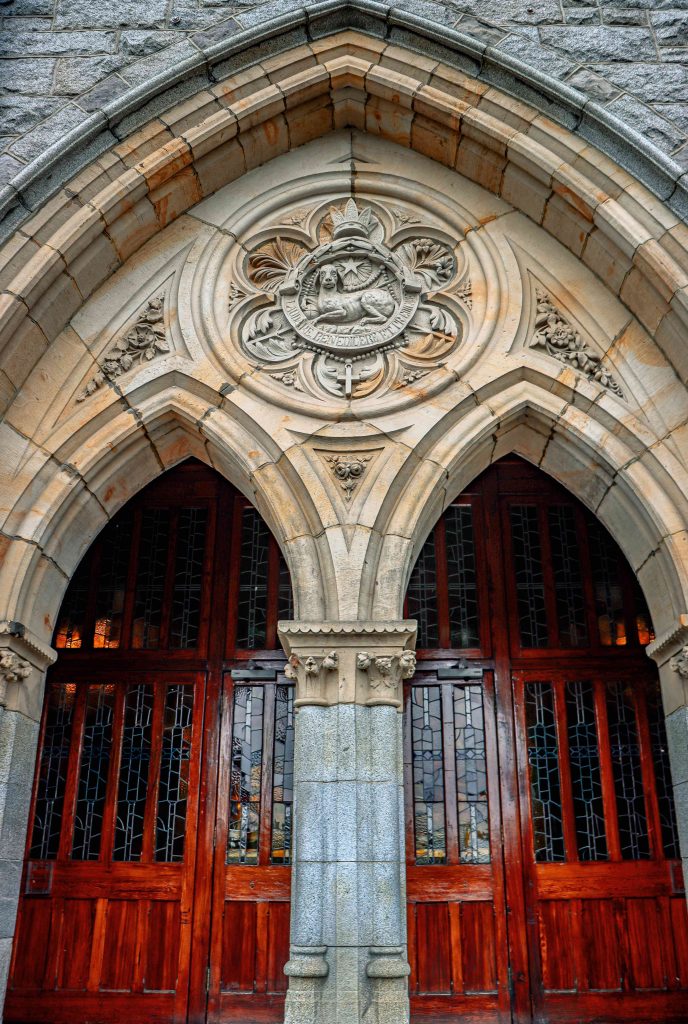
The front door with a hexafoil image of a dog
The exterior of the Church is built from Newry Granite with dressings of Dungannon stone.
A fine example of Dungannon stone dressing with a hexafoil depiction of a hound surround by the rosary above the main door.
The Dominicans have been known as Domini Canes (Dogs of the Lord), a play on the latin word Dominicanus (Dominicans).
Blessed Jordan of Saxony O.P., the first biographer and successor of Saint Dominic, relates that before Saint Dominic’s birth his mother, Blessed Jane of Aza, had a dream or vision. In this vision she bore in her womb a dog carrying a burning torch in its mouth. Leaping from her womb the dog seemed to set the earth on fire.
The Interior of the Church, first impressions.
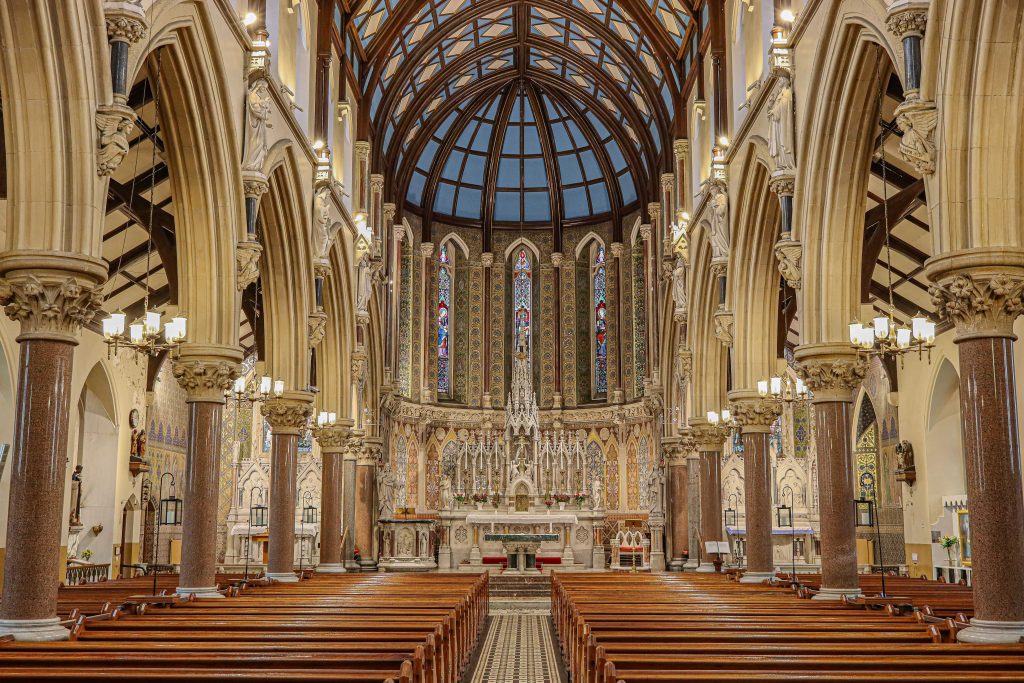
Upon entering the Church and looking towards the sanctuary the Aberdeen Granite columns on both sides of the nave can be seen with their Sicillian marble bases and capped with decorative floral Dungannon sandstone.
Greetings from our Dominican Saints
As you walk down the nave towards the sanctuary you will be greeted by our Dominican Saints.
Looking a meter or so above each of the columns on either side of the nave you will see a stone carving of an angel supporting a column ‘carrying’ a Dominican Saint. Each angel is holding a scroll with the name of the saint they ‘carry’ in latin, except for the last two nearest the altar which have a stone shield carving rather than an angel.
On the left side near the entrance is (1) St Louis Bertrand (1526-1581) a Spanish priest and missionary, then (2) St Catherine de Ricci (1522-1590) an enclosed third order Dominican nun, followed by (3) Saint Antoninus (1389-1459) Archbishop of Florence. Beyond him is (4) St Agnes of Montepulciano (1268-1317) an Italian Dominican nun, then (5) Raymond of Pennafort (1185-1275) a Spanish priest and renowned Canon lawyer. Finally we have (6) St Thomas Aquinas (1224/5-1274).
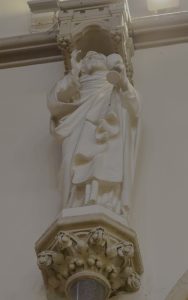
(1)
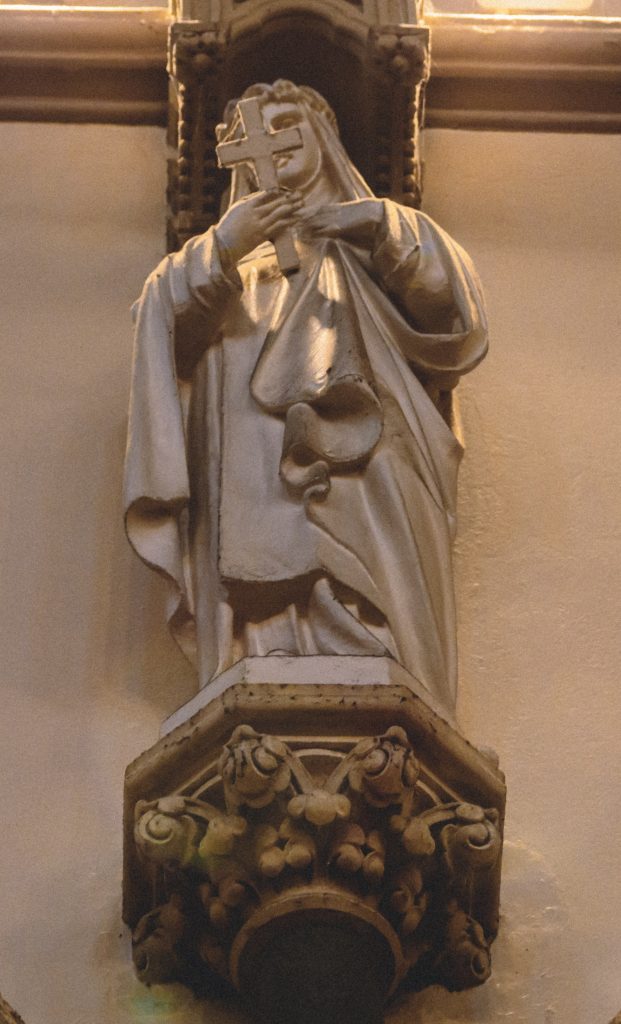
(2)
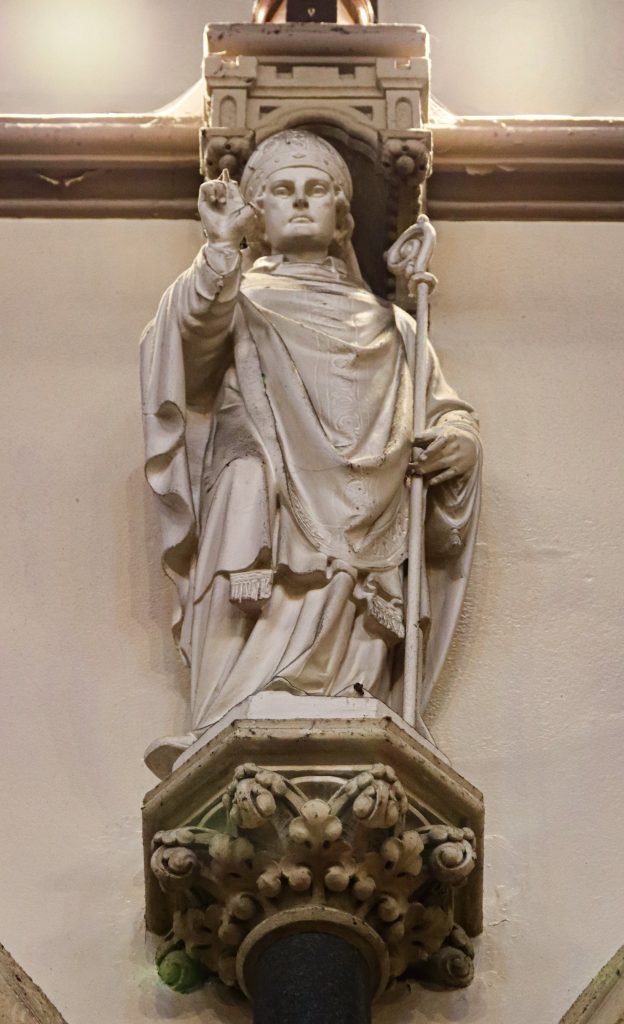
(3)
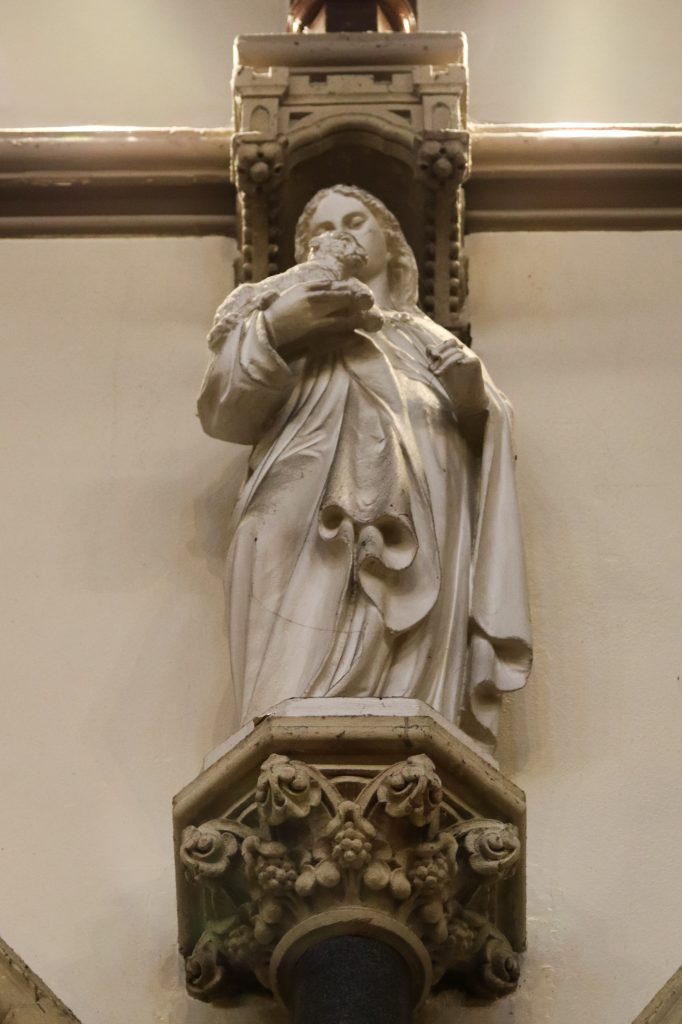
(4)
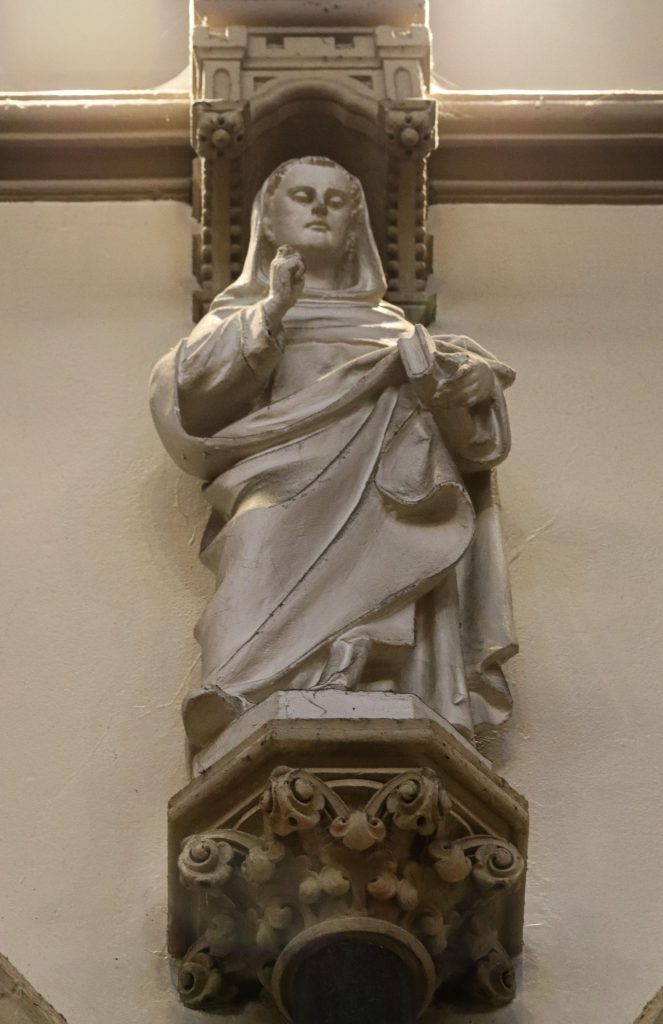
(5)
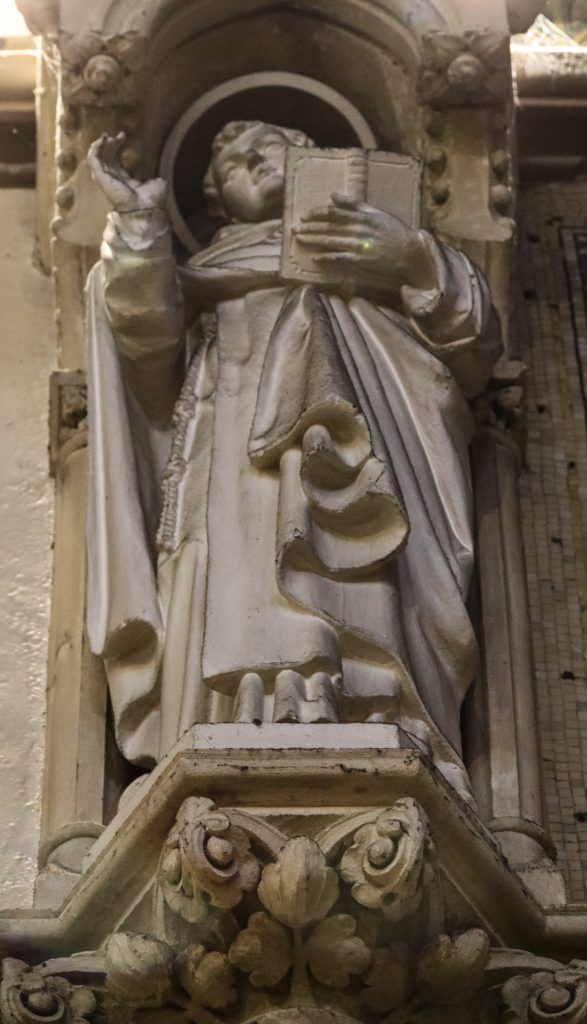
(6)
On the right side the first statue is (7) St Peter Martyr (1205?-1252) a 13th Century Italian priest and martyr, followed by (8) St Rose of Lima (1586-1617), the first canonised saint of the Americas and lay Dominican, followed by (9) Pope St Pius V (1504-1572). Beyond him is (10) St Catherine of Siena (1347-1380), followed by (11) St Hyacinth of Poland (1185-1257). Finally with (12) St Dominic de Guzmán founder of the Order of Preachers (1170-1221).
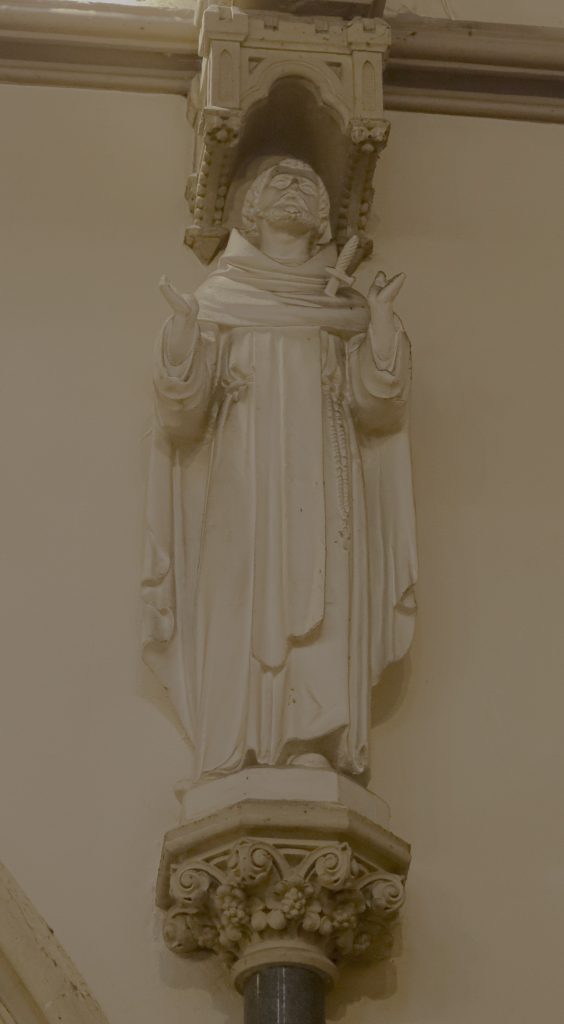
(7)

(8)
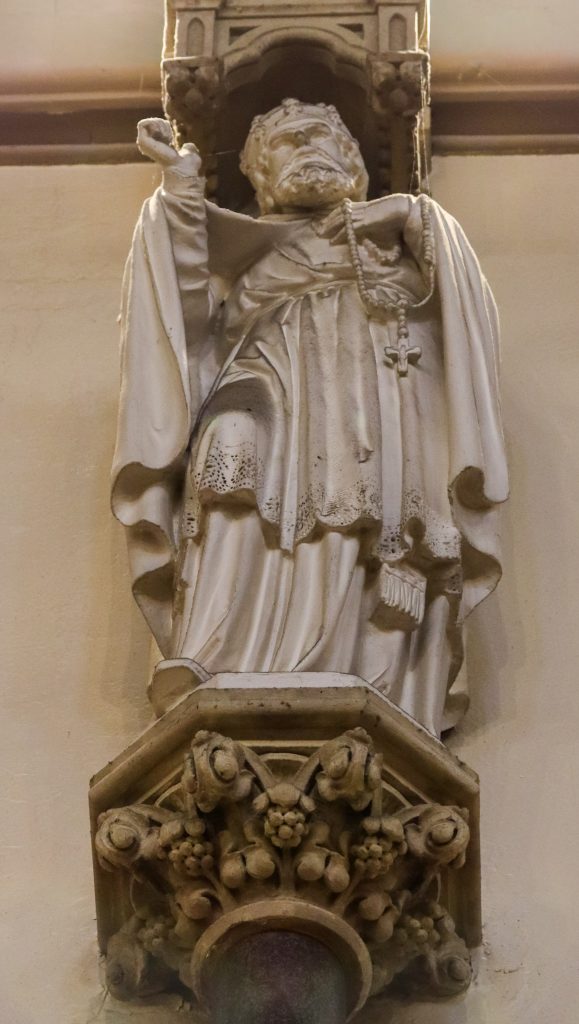
(9)

(10)
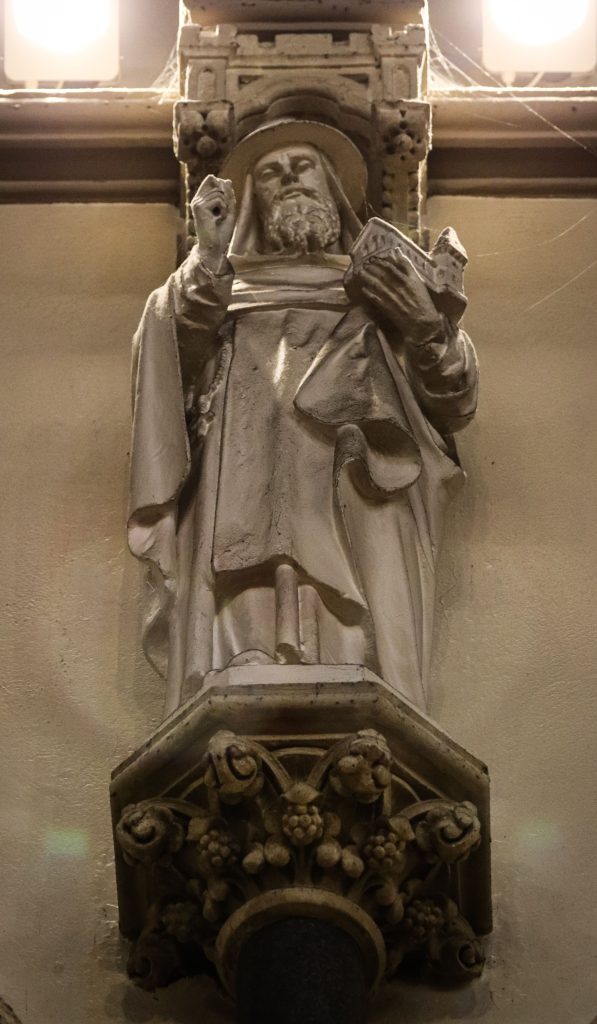
(11)
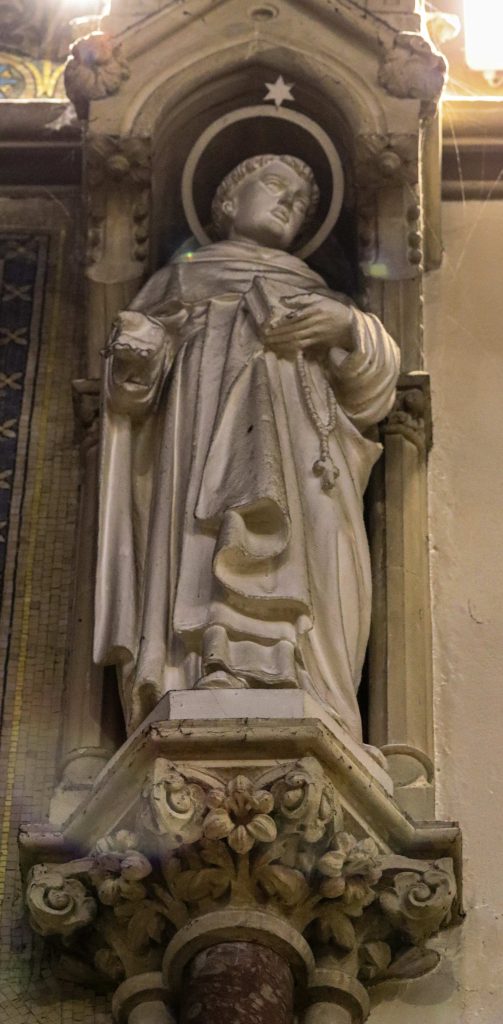
(12)
The Sanctuary
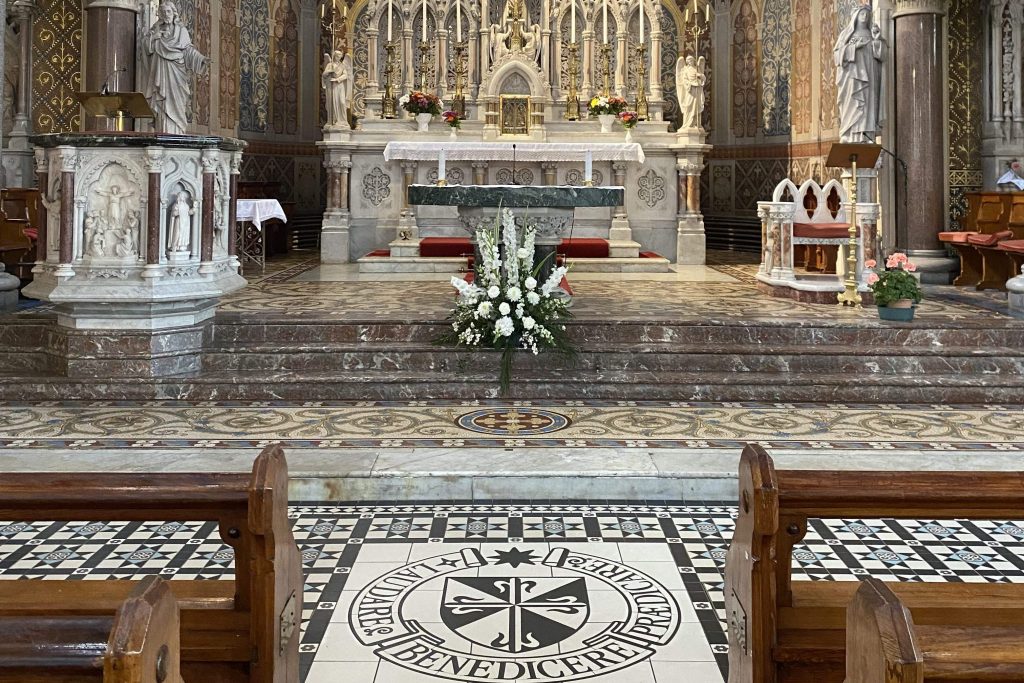
Walking along to the end of the the isle in the middle of the nave you will see on the ground a distinctive black and white shield with cross fleury of the Order of the Preachers (The Dominicans), surrounded with the latin motto, Laudare, Benedicere, Praedicare, (to Praise, to Bless, to Preach). With a star atop, for Saint Dominic is often depicted with a star on his forehead.
On the other side of the Dominican shield is the sanctuary. Up the steps is the high altar. On the left is the pulpit. On the right is the presider’s chair. Behind the altar and up a few steps is the tabernacle where the Blessed Sacrament is reposed.
The Pulpit
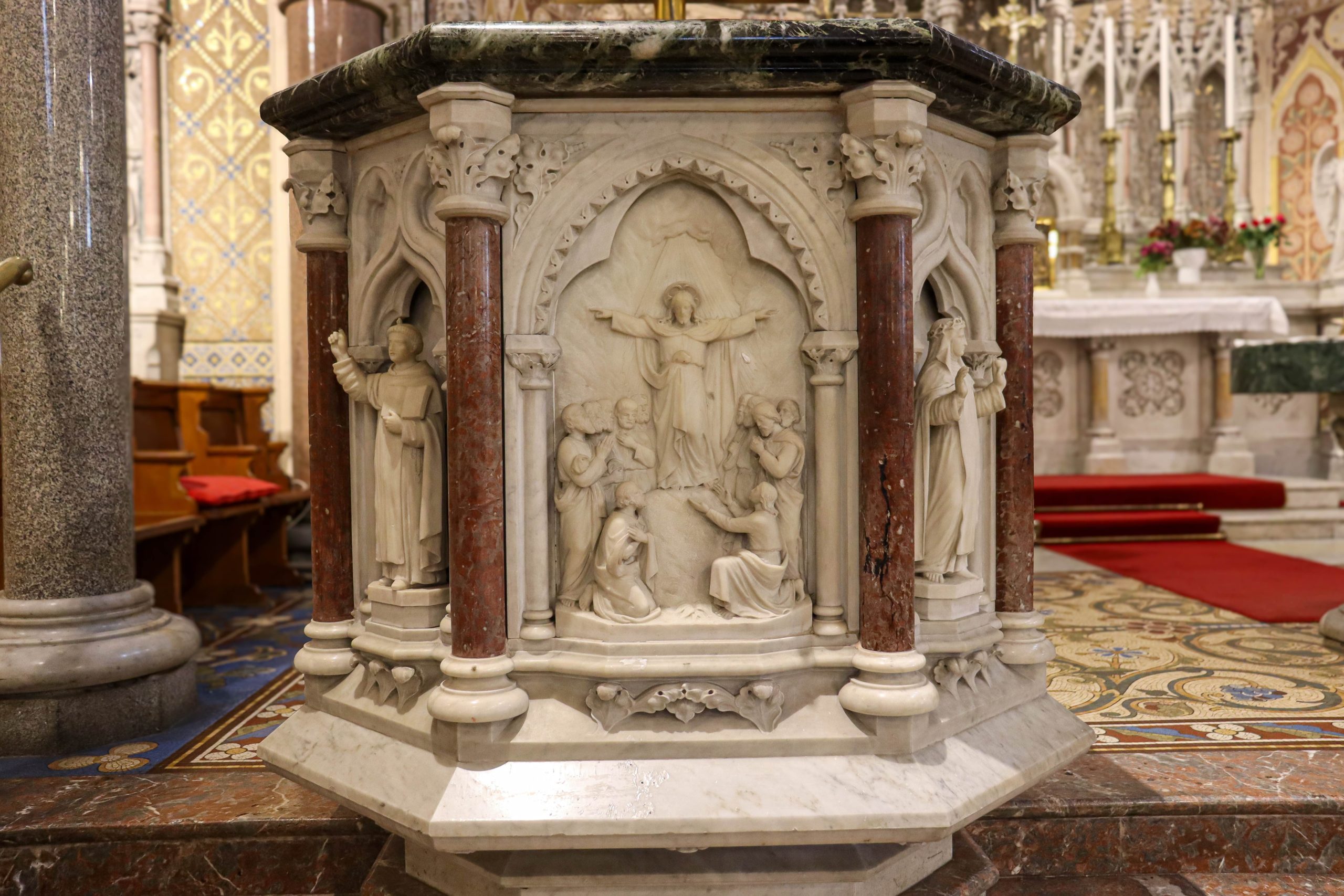
The pulpit is made of Scillitan marble, it was provided by Mr Pat McDonald’s lifesavings, in memory of his wife, in 1883. While it is now in the sanctuary it was originally built on the south side. The original base of the pulpit has been incorporated into the new altar. The pulpit is octagonal in form built of Carrara and a variety of richly coloured marbles, the principal panel represents The Transfiguration and the angle niches contain figures of various Saints of the Dominican Order.
Two Statues in the Sanctuary
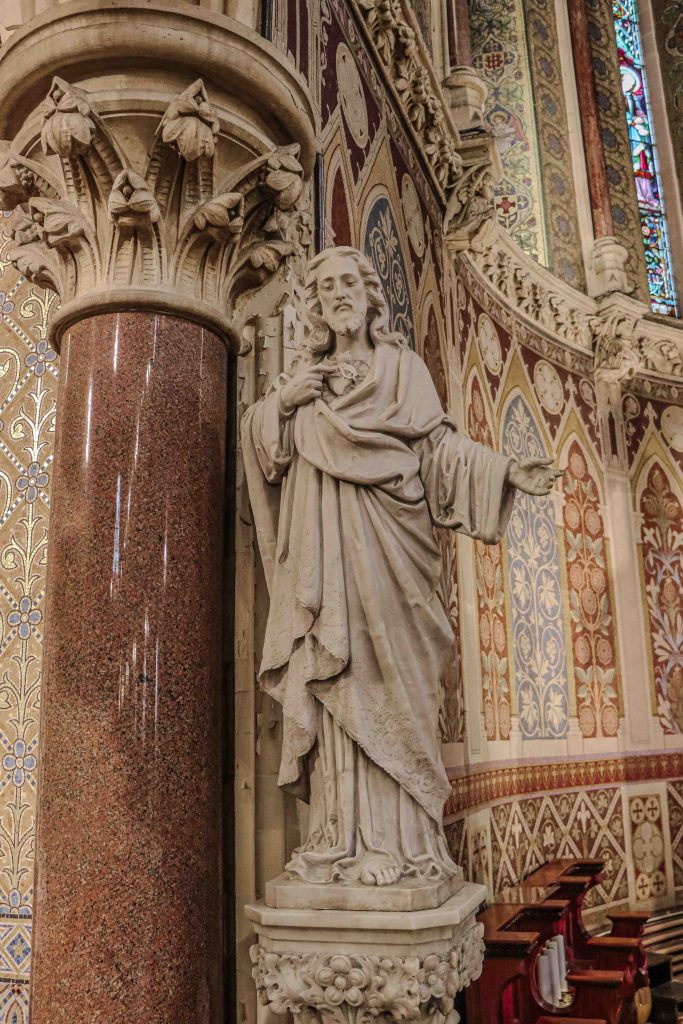
In the Sanctuary there are two statues. On the left hand side a statue of the Sacred Heart of Jesus.
On the left hand side a statue of Saint Catherine of Siena holding a heart in her hand.
Indeed the full name of the Church is The Church of the Most Sacred Heart and Saint Catherine of Siena.
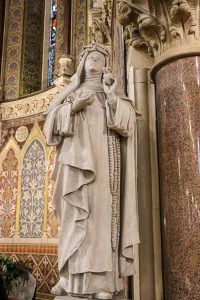
The Tabernacle Area
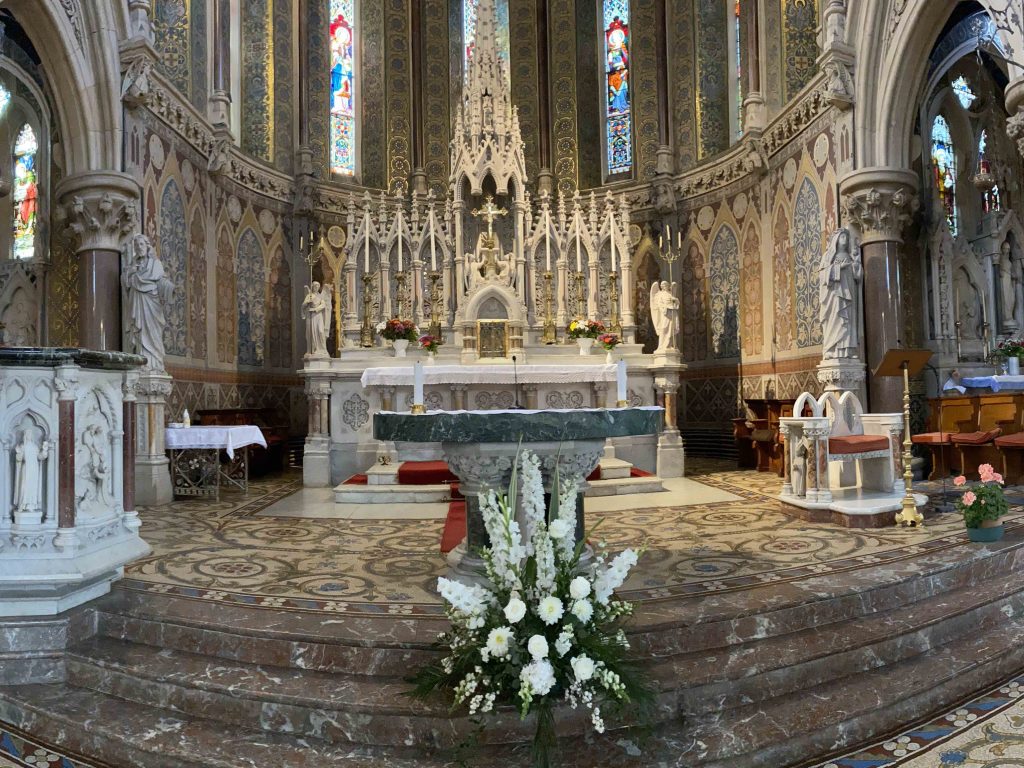
Under construction.
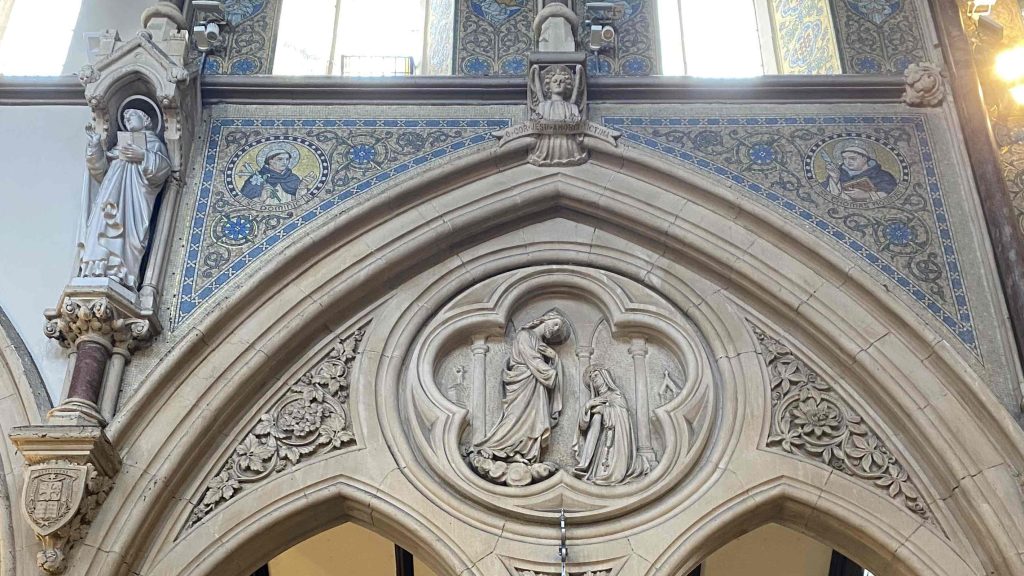
On the left side of the sanctuary, looking upward, you will see the central dressed stone cinquefoil (five leaf) depiction of the Lord Jesus giving Saint Catherine his own heart.
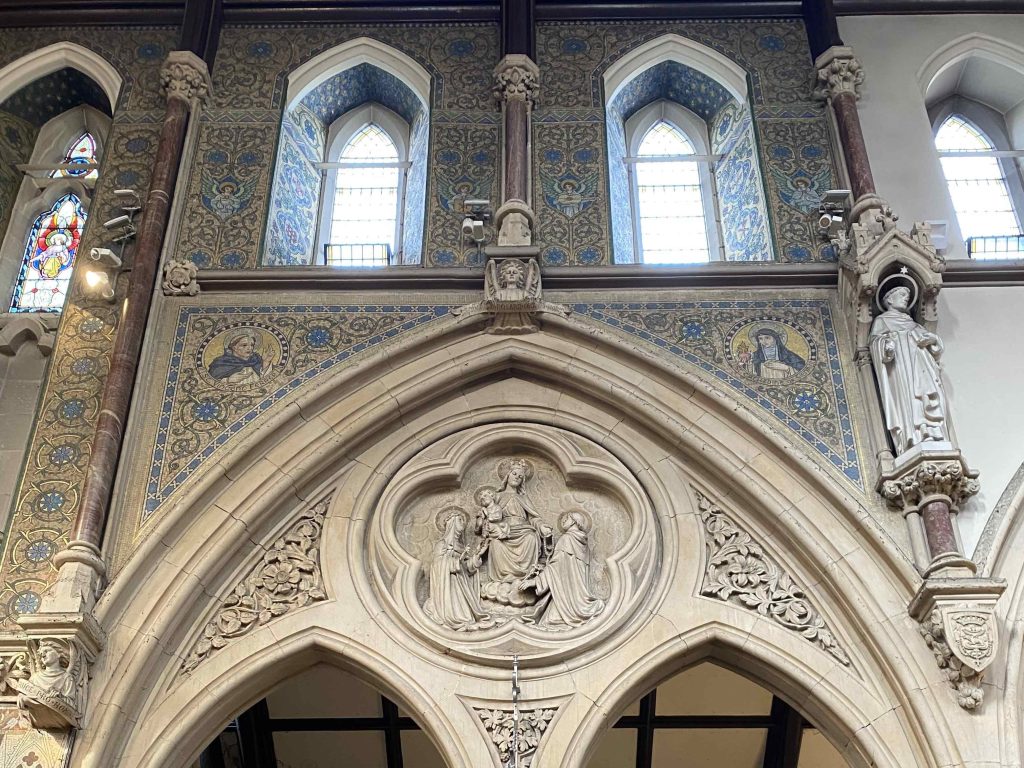
On the right side of the sanctuary, looking upward, you will see the central dressed stone cinquefoil (five leaf) depiction of the Our Lady giving Saint Dominic (on the right) the Holy Rosary and Saint Catherine (on the left) in conversation with the Christ Child.
St Joseph’s side Chapel and Altar
The Saint Joseph Altar is built of Carrara and other costly marbles in the middle of the reredos is a statue of St Joseph and the Christ Child and on each side are artistically worked themes of ‘The Workshop at Nazareth” and ‘The Manger at Bethlehem.” In January, 1878, Miss Rose Connor, a generous benefactor, gave £300 for the erection of the altar to St. Joseph, the design being entrusted to the Architects Ashlin & Co, and the work given to the firm of Pearse of Dublin, founded by the father of the patriot brothers, Padraig and Willie. Miss Connor, daughter of the late Francis Connor, of Bridge Street, donated the gift in memory of her sister, Kate.
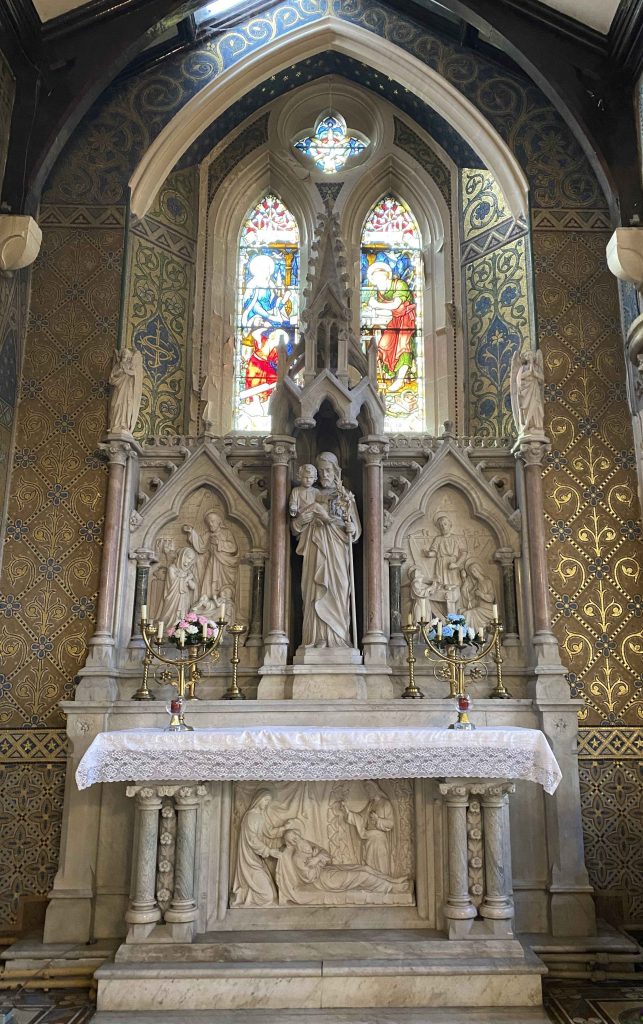
The Lady Chapel.
The left hand isle leads to Our Lady’s side altar. An altar of Italian marble designed by Leonardi of Rome, in honour of the Queen of the Rosary, This most beautiful and chaste altar has “The Annunciation” and “The Coronation of the Blessed Virgin Mary” panelled in sculptured relief in the reredos, the centre niche a repository for a very lovely statue of Our Lady of the Rosary. The antependium is a splendid piece of sculpture in alto relievo illustrating the giving of the Rosary by the Blessed Virgin Mary to Saint Dominic, Saint Catherine seen to be standing on the left of the group.
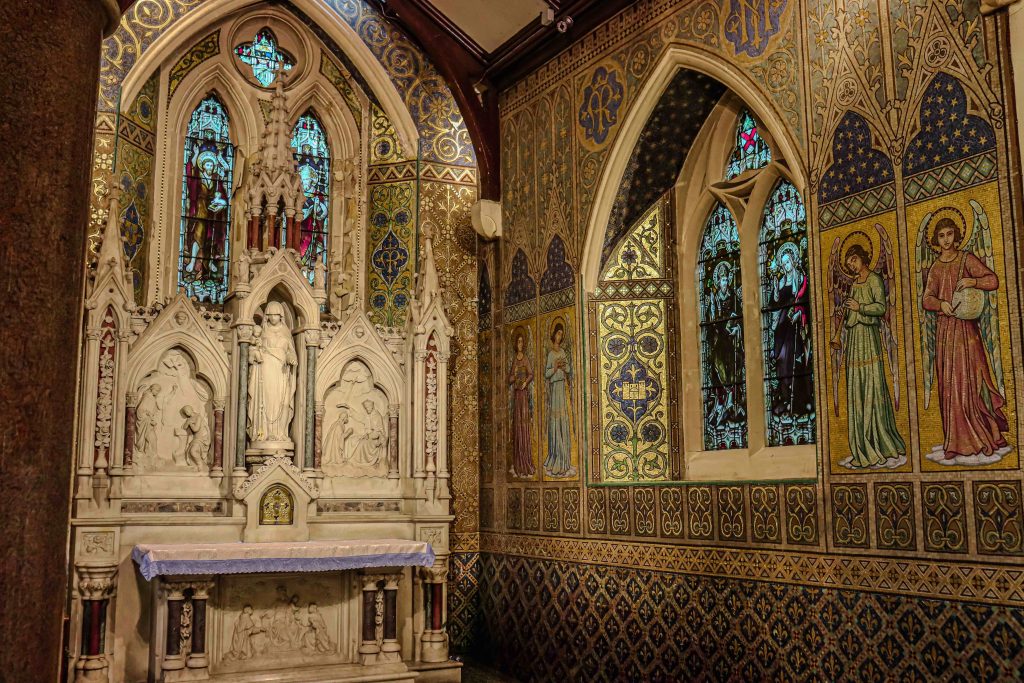
The arms of the Quinn family are inset in a mosaic medallion on the floor of the Lady Chapel, in front of the Altar, QUOD SURSUM VOVO VIDERE , I WISH TO SEE THINGS WHICH ARE ABOVE.
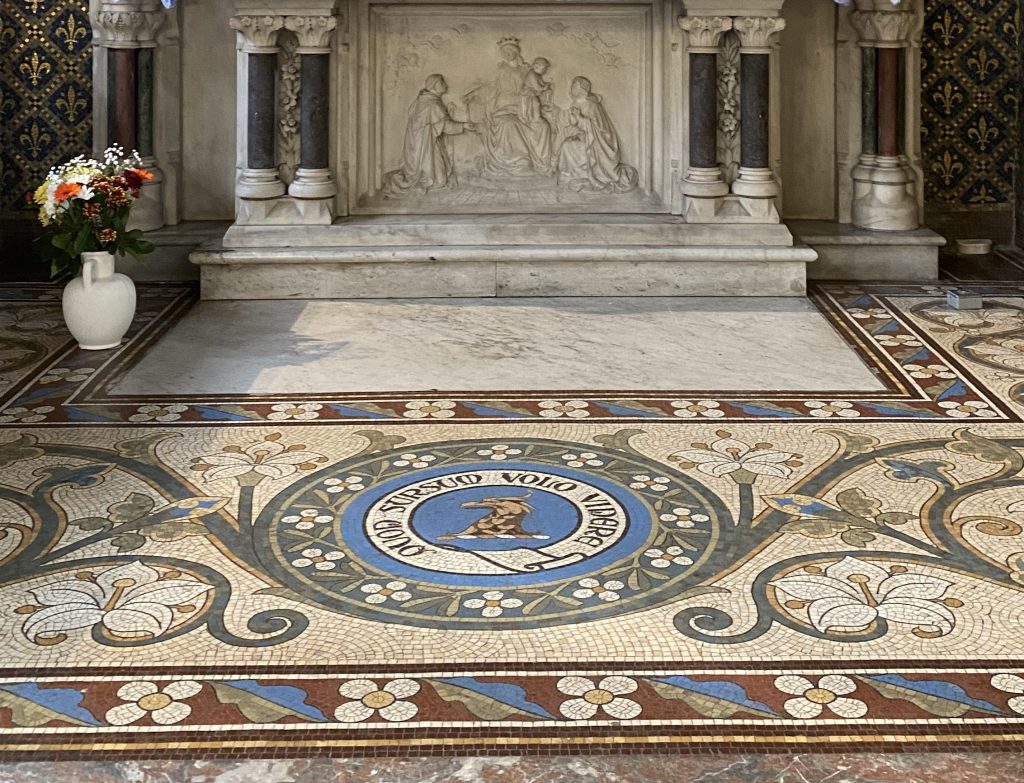
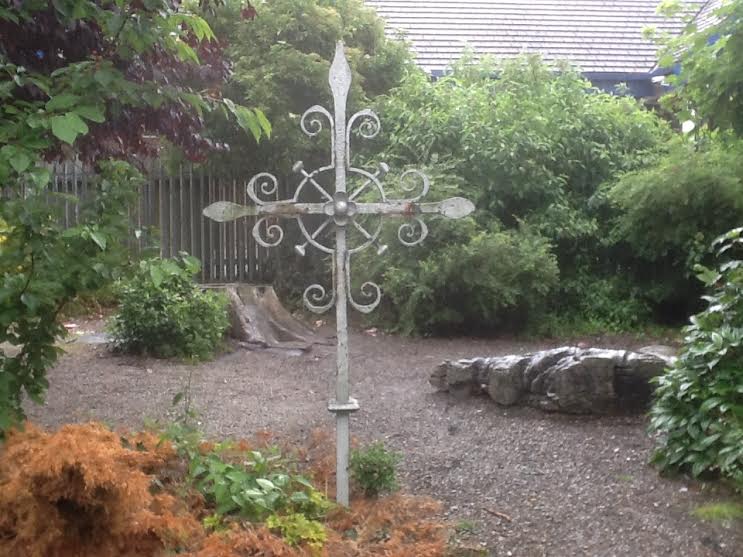
Saint Catherine’s Garden Park